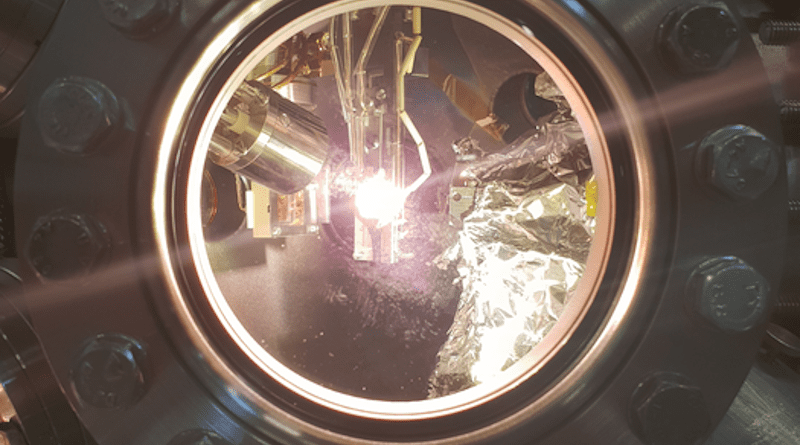Ultrafast Magnetism: Heating Magnets, Freezing Time
New materials should make information processing more efficient, for example, through ultrafast spintronic devices that store data with less energy input. But to date, the microscopic mechanisms of ultrafast demagnetization are not fully understood. Typically, the process of demagnetization is studied by sending an ultrashort laser pulse to the sample, thereby heating it up, and then analyzing how the system evolves in the first picoseconds afterward.
Snapshot of the lattice condition
“Our approach is different,” explains Dr. Régis Decker, lead author of the study. “We keep the sample at a certain temperature during the spectra acquisition. And we do that for many temperatures, from -120°C to 450°C for Gd – and much higher (1000°C) for previous experiments with Ni and FeNi. This allows us to quantify the effect of the phonons for each temperature on the ultrafast demagnetization, where the temperatures of the lattice, electrons and spins subsystems evolve with time. In other words, by placing the system at a certain temperature, we do a capture of the lattice condition at a given time after the ultrashort laser pulse and we measure there.”
Gadolinium examined
The element gadolinium has 4f and 5d electron orbitals, which both contribute to its ferromagnetic properties. The higher the temperature, the more the crystalline sample vibrates – and as physicists say: the more the population of phonons increases, and the more likely spin-flips are to occur due to the scattering of electrons with phonons from the crystal lattice.
Scattering rates distinguished
Using the method of inelastic X-ray scattering (RIXS), the physicists were not only able to determine the number of phonons at a given temperature, but also to distinguish the interactions between phonons and 4f- and 5d-electrons. Using the strict X-ray spectroscopic symmetry selection rules, the evaluation succeeded in distinguishing between the scattering rates of the 4f and 5d electrons.
5d electrons interact with phonons
The data show that there is hardly any scattering between the localized 4f electrons and phonons, but most of the scattering process takes place between 5d electrons and phonons, so that a spin-flip only occurs there. “Our approach evidences that the electron-phonon scattering, which is known to be one of the main trigger of ultrafast demagnetization, applies to the 5d electrons only. Interestingly, it also shows the presence of a temperature threshold, which depends on the material, below which this mechanism does not occur. This indicates the existence of another microscopic mechanism at lower temperature, as predicted by theory”, Decker explains.

